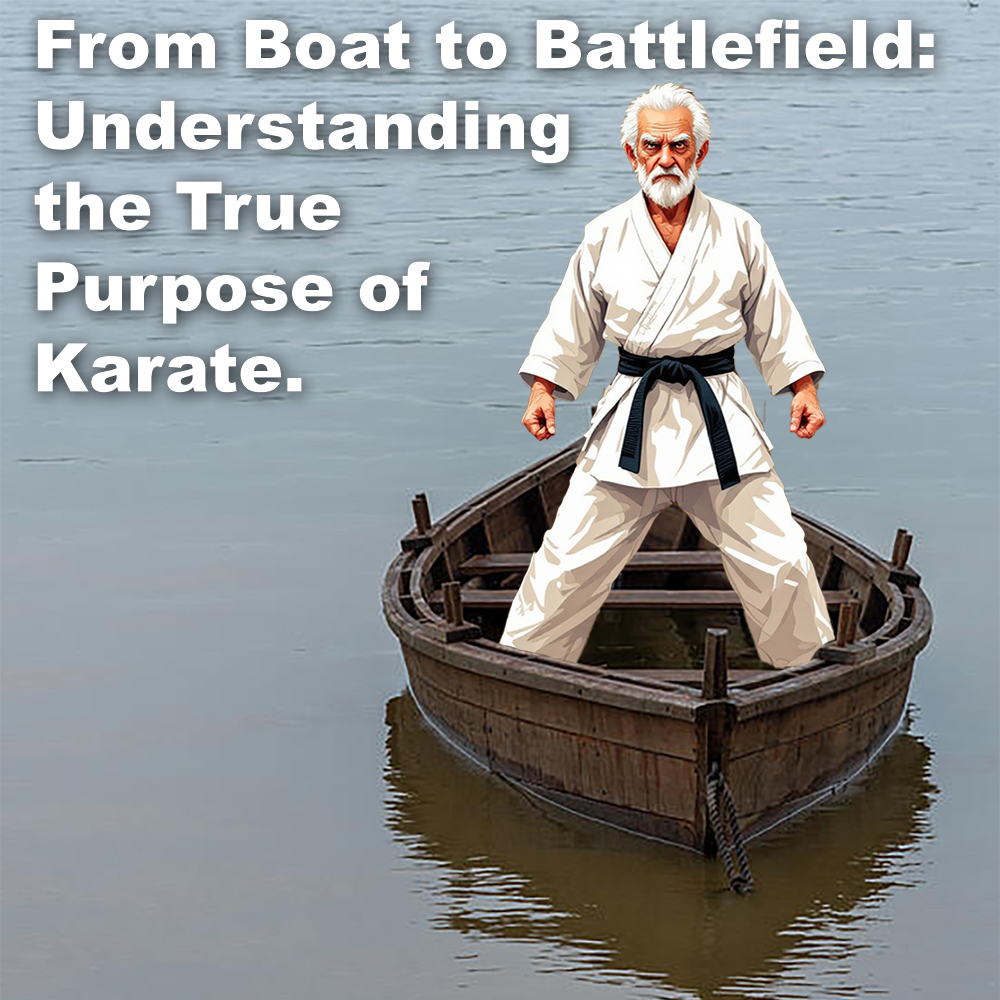
(Approx 2 minute 15 second read)
The other day, I received a comment on an article where I wrote about practices that lack any connection to real-world scenarios, where drills such as yakusoku, renzoku, or sanbon/gohon kumite, etc., are very unlikely, especially when attacking from six feet away using an Oi-zuki.
.
He stated that the distance was because karate was designed for the battlefield.
.
Well, no. Karate isn’t a battlefield art.
.
The comment, dripping with sarcasm, said: “If karate wasn’t a battlefield art, then enlighten me as to what it is, then.”
.
Well, challenge accepted. Let’s get straight to it.
.
Karate is not a battlefield art. It never was, and it was never meant to be. If we look at the history of karate, it was developed as a civilian self-protection system in Okinawa. Its purpose was to help ordinary people survive violent encounters in everyday life – not to fight in wars or on battlefields. That’s a big difference.
.
Choki Motobu made this pretty clear when he said: “The techniques of kata were never developed to be used against a professional fighter, in an arena or on a battlefield. They were, however, most effective against someone who has no idea of the strategy being used to counter their aggressive behavior.”
.
Anko Itosu explained that karate was a way to protect yourself from “villains or ruffians.” These are not the words of people creating a military combat system.
.
So, why do we call karate a martial art?
.
It’s largely out of tradition and convenience. The term “martial art” comes from the Roman god of war, Mars, and originally referred to systems developed for the battlefield. By that strict definition, karate doesn’t qualify.
.
However, over time, the meaning of the term has broadened to include disciplines that focus on combat skills, self-defense, and personal growth – whether or not they were designed for war. Karate fits into this expanded definition because it teaches techniques for dealing with violence, while also developing values like discipline, focus, and self-control.
.
Calling karate a martial art helps people understand that it’s about fighting skills and combative principles, even though its true origins lie in civilian self-protection rather than warfare.
.
So, what’s the real distinction?
.
A civilian self-protection system is focused on surviving and getting away from danger. It’s about dealing with the kind of violence an everyday person might face: sudden, unarmed aggression or an attack by someone who doesn’t know what they’re doing. The techniques are designed for close-range encounters and rely on practical strategies, like de-escalation and escape.
.
On the other hand, a martial system – something truly designed for war – has a completely different focus. It’s all about killing or incapacitating enemies, often as part of a team, and using weapons or organized strategies for battle. That’s not karate.
.
So, to the commenter who asked me to “enlighten” them: there you go. Karate is about survival in civilian life. It’s not about war, and it never was. The more we understand that, the better we can honor karate’s roots and keep it relevant in the modern world.
.
Karate for the battlefield? Not quite as bad as Naihanchi is for fighting sideways on a boat, but it’s close.
.
.
Written by Adam Carter
